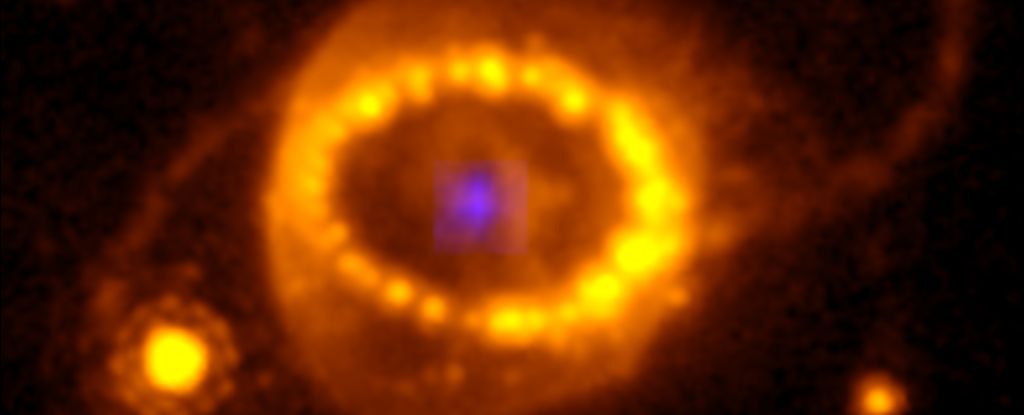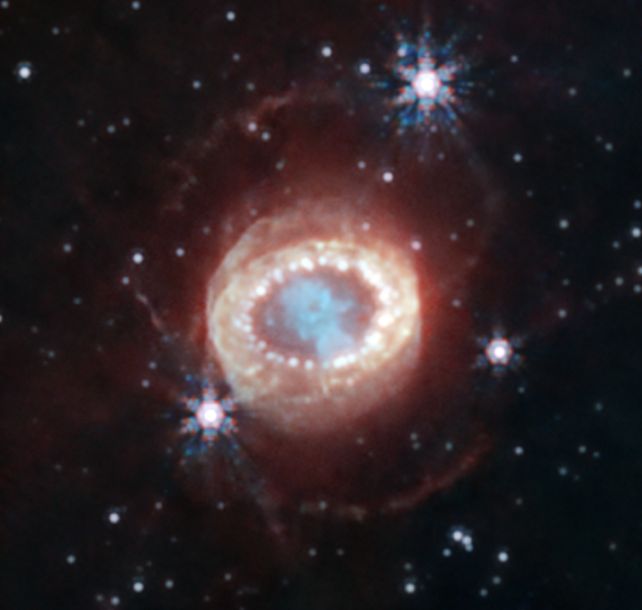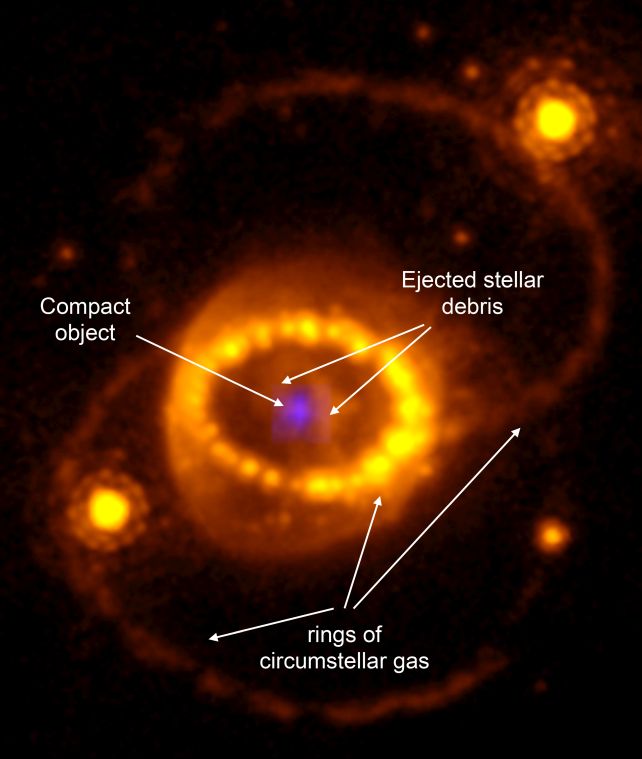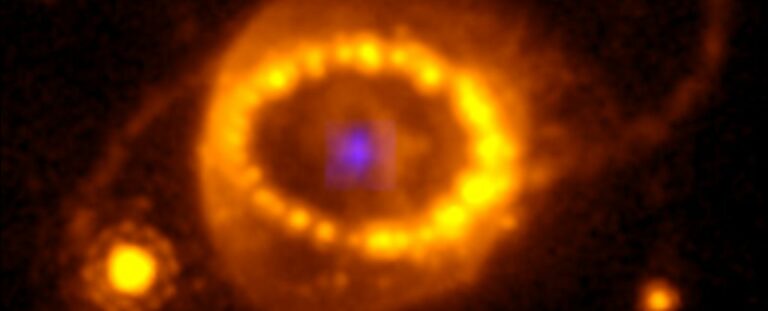JWST has now discovered compelling evidence of the remnants left behind by this extraordinary event.
In 1987, a rare celestial event illuminated Earth’s sky. The supernova explosion of a dying star in the Large Magellanic Cloud was visible from our planet, located 168,000 light-years away. The brightness of the event could be observed with the naked eye, appearing as a small, bright spot that gradually faded over the following months.

Since then, the ejected material from the supernova, known as SN 1987A, has continued to evolve. Although no longer visible without telescopes, the proximity of the event has provided scientists with a unique opportunity to study the immediate aftermath and progression of a massive stellar death.
One significant question remained unanswered: what happened to the core of the star, which should have remained intact amidst the debris of the explosion? Recent analysis of data from the James Webb Space Telescope (JWST) has revealed unexpected evidence of a neutron star hidden within the remnants of the supernova.
Astrophysicist Claes Fransson from Stockholm University, who led the study, stated, “Thanks to the exceptional spatial resolution and advanced instruments on JWST, we have, for the first time, been able to investigate the center of the supernova and its aftermath. We now have confirmation of a compact source of ionizing radiation, likely a neutron star. This discovery validates our predictions and underscores the importance of JWST in our research efforts.”

The core-collapse supernova, which occurs when a massive star runs out of core fusion material, is considered one of the most violent events in the Universe. When the fusion process slows down and the outward pressure can no longer counteract the inward pressure of gravity, the star undergoes a catastrophic explosion.
During this explosion, the outer material is ejected into space, while the core of the star collapses under the force of gravity, forming an extremely dense object. The nature of this object depends on the initial mass of the star. According to calculations, a star with an initial mass between 8 and 30 times that of the Sun will result in the formation of a neutron star. If the star is even more massive, it will collapse into a black hole.
Due to the rarity of observing supernovae up close, scientists were eagerly anticipating the unfolding of SN 1987A. However, due to the presence of debris, it was uncertain whether this particular supernova had produced a neutron star or a black hole.
Scientists initially believed that a neutron star was the more likely explanation, but they faced difficulties in examining the dust left behind with sufficient clarity to confirm their hypothesis. However, in 2022, the JWST conducted observations of the well-known supernova remnant, and Fransson and his team turned to these observations in search of answers. They utilized the infrared capabilities of the powerful telescope to peer into the debris and employed spectroscopy to analyze the gas composition within.
To their surprise, near the center of the supernova remnant, close to the site of the explosion, they discovered heavy argon and sulfur atoms that had undergone ionization, resulting in the removal of their outer electrons. Ionization involves the addition or removal of electrons, and there are various mechanisms for this process. Through their modeling efforts, the team determined that, in this specific context, there was only one plausible explanation: a neutron star.
The team’s models presented two scenarios involving neutron stars. In the first scenario, a very hot neutron star emitted powerful ultraviolet and X-radiation, which stripped the electrons as the star gradually cooled down. In the second scenario, particles emitted from a rapidly rotating neutron star could have interacted with the surrounding material, leading to the ionization of the atoms.

Astronomer Mike Barlow from University College London states that the detection of strong ionized argon and sulfur emission lines from the center of the nebula surrounding Supernova 1987A using James Webb’s MIRI and NIRSpec spectrometers provides direct evidence of a central source of ionizing radiation. The data collected can only be explained by a neutron star being the power source of this radiation.
The discovery resolves a mystery that has persisted for over three decades, confirming the presence of a neutron star. This finding aligns with existing theories about neutron stars, indicating that argon and sulfur are generated in significant amounts within a dying star before it explodes into a supernova. The detection of ultraviolet and X-radiation in a supernova remnant was previously predicted to signify the existence of a newly formed neutron star.
The unexpected method of discovery through strong argon emission lines highlights the ongoing surprises presented by this supernova, as noted by astrophysicist Josefin Larsson from Sweden’s Royal Institute of Technology.
The discovery has been published in Science.
Do not forget to share your opinion with us to provide you with the best posts !




0 Comments